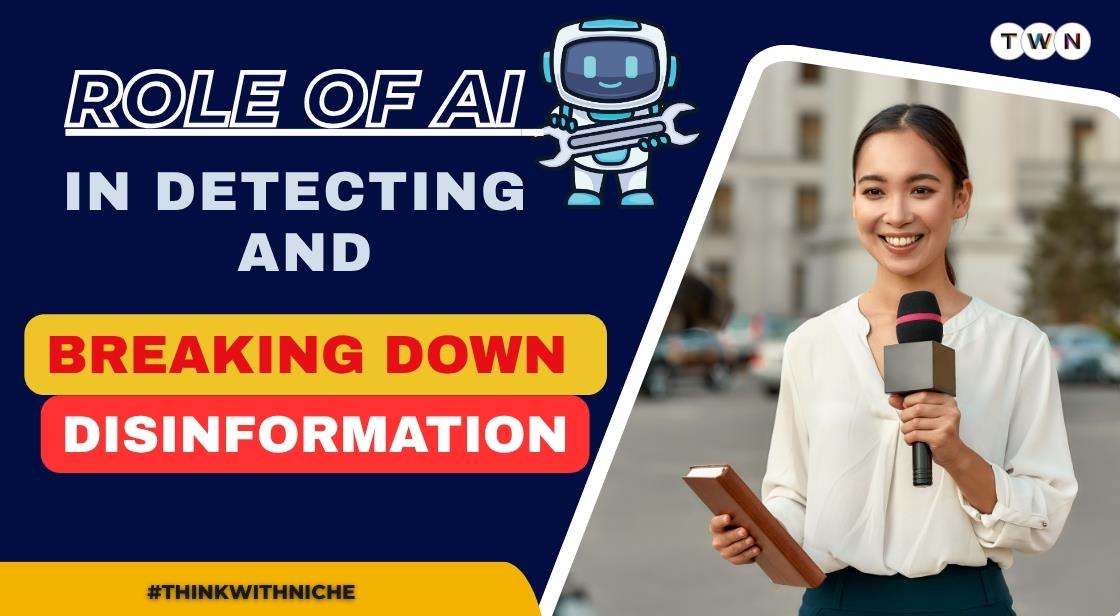The Role of AI in Detecting and Breaking Down Disinformation

Blog Post
In an era dominated by rapid information exchange, it is often assumed that facts and data alone shape public opinion and beliefs. However, the truth is far more complex. Human beings are naturally drawn to stories—narratives that evoke emotions, build connections, and make information memorable. From personal anecdotes to viral memes, storytelling shapes how we interpret the world around us.
Yet, this powerful tool can also be exploited. In today’s digital landscape, social media platforms amplify stories at an unprecedented scale, enabling the spread of disinformation—intentionally crafted falsehoods designed to deceive and manipulate. Complicating matters further is the rise of artificial intelligence (AI), which can both facilitate and combat the dissemination of misleading narratives.
This introduction explores how AI is being developed to understand and counteract disinformation by analyzing narrative structures, cultural contexts, and user personas. By leveraging these advances, researchers, governments, platforms, and everyday users are better equipped to navigate the complex dynamics of storytelling in the digital age and protect the integrity of public discourse.
How AI Is Changing the Fight Against Disinformation
In today’s information-driven world, it is often assumed that facts and data hold the ultimate power in shaping people’s opinions and beliefs. However, reality tells a different story. It is not just cold, hard facts that move us; it is the compelling narrative behind those facts that truly resonates with individuals.
From heartfelt anecdotes and personal testimonials to viral memes capturing shared cultural moments, stories have an extraordinary ability to stick in our minds, evoke strong emotions, and shape how we perceive reality.
Stories serve as the fundamental way humans make sense of the world. They help us remember information better, connect emotionally with others, and influence our views on social and political issues.
This power of storytelling, while beneficial in many contexts, can also become dangerous when wielded to manipulate or mislead. In the digital age, social media platforms amplify these narratives on a massive scale, introducing new challenges and complexities.
Adding another layer to this problem is the rise of artificial intelligence (AI), which can both exacerbate the spread of manipulative stories and offer innovative solutions to detect and counteract them. Researchers are now developing machine learning methods specifically designed to analyze content that fuels disinformation campaigns, helping to protect the integrity of public discourse.
Disinformation vs. Misinformation: Understanding the Key Differences
Before delving deeper into how narratives are used and misused online, it is important to clarify a crucial distinction between two often confused concepts: misinformation and disinformation.
-
Misinformation refers to false or incorrect information that is shared without harmful intent. It often arises from genuine mistakes, misunderstandings, or incomplete knowledge.
-
Disinformation, in contrast, involves the deliberate creation and distribution of false information with the explicit purpose of deceiving people and manipulating opinions.
Humans are naturally drawn to information presented as stories, which make facts more relatable and emotionally engaging. This innate preference for narrative over dry data makes disinformation particularly effective. When false information is embedded within a compelling story, it tends to override skepticism and spreads more easily than isolated facts or statistics.
For example, hearing a touching story about rescuing a sea turtle entangled in plastic pollution is far more likely to inspire concern and action than simply being presented with environmental statistics alone. This emotional engagement explains why disinformation campaigns often rely heavily on narrative techniques to influence public opinion.
Also Read: How AI Voice Agents Are Transforming Startups in 2025
The Role of Usernames, Cultural Context, and Narrative Timeline in Detecting Disinformation
Usernames: More Than Just Handles
Narratives are not just about what is said; they also involve who says it and how they present themselves. Social media users create personas, often reflected in their usernames or handles, which contribute to the credibility and appeal of their stories.
AI tools can analyze these usernames to extract subtle clues about the user’s demographics, such as probable gender, ethnicity, or geographic location. Moreover, handles sometimes include sentiments or personality indicators embedded in the choice of words or style.
For instance, a username like @JamesBurnsNYT suggests an association with a reputable news outlet, possibly lending greater perceived credibility to the account. By contrast, a casual handle like @JimB_NYC may feel less authoritative, even if both belong to the same individual. Disinformation campaigns exploit this by fabricating usernames that mimic trustworthy sources to deceive audiences and build false credibility.
While a username alone cannot definitively verify authenticity, it plays an important role in a broader AI-powered assessment that determines whether an account is genuine or likely part of a coordinated disinformation effort.
Narrative Timeline: Decoding the Order of Events
Stories shared online do not always follow a straightforward, chronological order. Often, social media posts present information out of sequence, flash back to earlier events, or omit key details.
Humans are generally adept at navigating these nonlinear narratives, filling in gaps and interpreting meaning. For AI, however, understanding the sequence and relationship between events in fragmented storytelling poses a significant challenge.
Advanced timeline extraction techniques are being developed to help AI recognize key events, arrange them in logical order, and map how they relate to one another even when the narrative jumps around in time. This capability is essential for evaluating the veracity and coherence of stories and for detecting manipulated or fabricated content.
Cultural Context: Interpreting Symbols and Meanings Across Different Societies
Language and symbols can hold vastly different meanings depending on cultural backgrounds. Without a deep understanding of these cultural nuances, AI systems may misinterpret the true intent behind narratives or fail to recognize manipulative tactics. For instance, while the color white often symbolizes purity and celebration in many Western cultures, it is traditionally linked to mourning and funerals in several Asian societies, which can cause a phrase involving white to be perceived as unsettling or even inappropriate.
Disinformation agents take advantage of these cultural distinctions by crafting messages that emotionally connect with particular groups, while potentially confusing or misleading others. Consequently, AI must be trained on a wide range of cultural narratives and symbolic interpretations to effectively identify deceptive stories that exploit cultural symbolism.
How Narrative-Aware AI is Transforming the Fight Against Disinformation
The integration of narrative analysis into AI tools marks a significant advancement in combating disinformation. These narrative-aware AI systems provide powerful new capabilities for various stakeholders across society:
Intelligence and Security Agencies
Intelligence analysts face the daunting task of monitoring vast volumes of social media content daily to identify influence operations and emotionally charged disinformation campaigns. Narrative-aware AI enables them to quickly detect coordinated story arcs spreading across platforms, pinpoint clusters of related narratives, and identify suspicious timing in posts.
This capability helps agencies implement timely countermeasures, preventing disinformation from gaining traction and influencing public opinion or political processes.
Crisis Response Organizations
During emergencies such as natural disasters, false information can cause panic or divert critical resources. AI tools that understand narrative context can swiftly flag and filter out false emergency claims, ensuring that responders focus on genuine threats and reliable information.
Social Media Platforms
Online platforms can leverage narrative-aware AI to enhance content moderation processes. By automatically detecting high-risk disinformation stories, they can prioritize human review of potentially harmful posts without resorting to excessive censorship. This balance helps maintain free expression while protecting users from manipulation.
Researchers and Educators
For academics studying social dynamics and misinformation, narrative-aware AI offers rigorous methods for tracking how stories evolve and spread across different communities. This supports more accurate analysis and facilitates sharing insights that can inform public education and media literacy efforts.
Everyday Users
The ultimate beneficiaries of these technologies are ordinary social media users. AI-powered alerts can warn readers in real time about suspicious stories or accounts, encouraging critical thinking and skepticism before falsehoods take hold. This empowers individuals to make more informed decisions about what to trust and share online.
The Future of AI and Storytelling in the Digital Age
As AI continues to evolve, its role in interpreting online content extends far beyond traditional keyword matching or semantic analysis. Understanding the subtle art of storytelling—including narrative structure, cultural context, and user persona—becomes essential to navigating today’s complex information environment.
Institutions like the Cognition, Narrative, and Culture Lab at Florida International University are at the forefront of developing AI tools capable of detecting disinformation campaigns that exploit narrative persuasion. Their research highlights the need for AI systems that combine linguistic, psychological, and cultural insights to more effectively identify manipulative content.
In a world where stories shape beliefs more than facts alone, narrative-aware AI represents a promising frontier in safeguarding truth and fostering resilience against misinformation and disinformation.
Conclusion: Harnessing Narrative Power Responsibly
Stories have been central to human communication since the dawn of civilization. Their emotional and mnemonic power can inspire change, foster empathy, and create community. But the same power can be harnessed to mislead and manipulate when combined with digital technologies and social media.
Understanding the dynamics of storytelling—how narratives are constructed, who tells them, and the cultural frameworks they operate within—is critical to combating disinformation in the digital age. Narrative-aware AI tools offer a vital new approach to analyze and counter these manipulative stories, supporting governments, platforms, researchers, and users alike.
By embracing these innovations responsibly, society can better navigate the flood of information online, distinguishing fact from fiction and protecting the foundations of informed public discourse.
You May Like
EDITOR’S CHOICE












